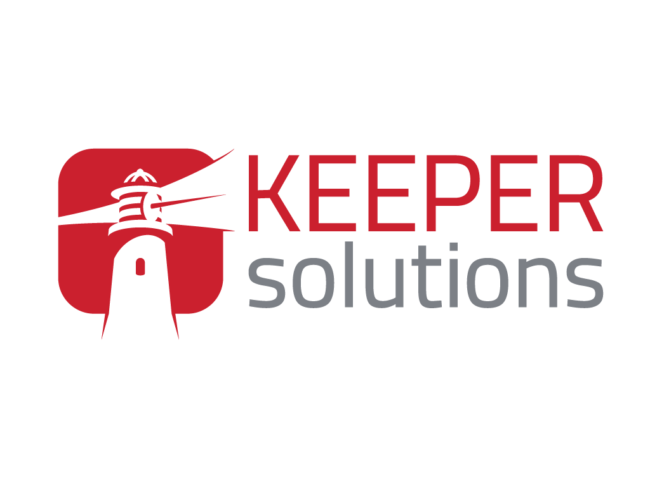The Growth Series – How Scaling Companies Use Design Sprints to Plan for the Future
The Growth Series is a series of posts from Keeper Solutions centered around growing your team and taking your business to the next level.
Knowing how to scale your software company requires a huge amount of strategic thinking and forward planning. But, when designing a product, many companies only think of immediate objectives. They consider their runway (the amount of time that a company has before it exhausts its current source of funding), their costs and sales targets for the year ahead. They set goals and objectives that are only concerned with the quarter or year ahead.
But ambitious companies need to look further down the line, especially when it comes to building a product that is designed to scale. From the outset, companies need to ask themselves some important questions such as:
-
-
-
-
-
-
-
-
-
-
- Are you planning to break into International markets? When building a software product, you need to think about your international ramifications. If you are planning on targeting global markets, there is a lot to consider during development. Do you need language translation? What kind of currencies do you need to handle? Are there different regulations and compliance considerations?
- Is your product capable of taking on new features and integrations at regular intervals? If you want your product to succeed long term, you need to be able to continually surprise, satisfy and provide a fresh experience to your customer.
- What is the size of your user base? The size of your user base will impact your technical choices. A product that is used by 10,000 – 20,000 people is a lot different to a platform that is targeting 100s of thousands or millions of users. This is something that needs to be considered at the outset of a software development project.
- Will there be variability in your expected user load? If so, how effectively can your system adapt to the varying load?
- Are you laying the foundation for future growth? A well designed software architecture is a vital component of a scalable product. This, combined with a solid technical infrastructure, are critically important when it comes to scalability.
-
-
-
-
-
-
-
-
-
Finding answers to these questions, and many others besides, is one of the main reasons why companies adopt a design-led approach to software development and use design sprints to plan for the future.

Scaling’s Secret Weapon – Design Sprints
In many ways, design sprints are the secret weapon when it comes to scaling. And it’s something that we lean on significantly at Keeper Solutions. One of the keys to preparing for the future is to use hard data to keep track of your progress and make long-term plans. This is a major part of design sprints.
All of the questions we posed in the previous section, require data to answer correctly. Having the right data to answer these questions also allows you to address any potential problems early on or avoid them entirely.
With the majority of our software projects, there is an initial phase of discovery and consultation. This, ideally, takes the form of a design sprint. This framework is used to map out challenges, explore solutions, decide on best approaches, and then create a prototype and test it. The approach can be boiled down to five simple words – map, sketch, decide, prototype, and test. And we make sure to consider the user every step of the way.
During the design sprint, we create user profiles (needs, wants, desires, fears of the product user) and the user journey, which describes the journey that a product takes a user on in order to complete a task or create value. By the end of the design sprint, the UX designer is in a position to map out a UX/UI design which details the user journey and what is required to build the product. And in this way a design sprint becomes the ultimate planning tool. (Learn more about how we integrate design sprints into the first two months of every engagement here.)

Design Sprint Outcomes
A well executed design sprints leaves you with a number of key outputs, which can be used to build a product that is designed for scale.
These include:
-
-
-
-
-
-
-
-
-
-
- UI/UX designs and a validated prototype – A carefully thought out, well documented prototype of a solution allows you to easily spot strengths and weaknesses.
- User personas – This includes a detailed analysis of your users, their wants, needs, fears and desires.
- A set of user stories – The user story and user journey describes the journey that a product takes a user on in order to complete a task or create value.
- Technical architecture diagrams – Within this technical architecture, the architect teases out the scale of the project, what devices the product will be designed for and what integrations are required in the back-end.
- Resources estimates – This lays out what resources you need to build a product that fits with your company objectives.
- Backlog grooming and sprint plan 1 & 2 – Backlog grooming is a key component of agile development. The goal of a backlog grooming session is to review items on the backlog to ensure all the correct tasks are being carried out and that certain aspects are being prioritised. Backlog grooming is an iterative process as some user journeys or features are removed if they’re not performing as expected.
-
-
-
-
-
-
-
-
-

Want to Create Products That Are Built For Scaling?
If you have a project in mind and want to work with an outsourcing partner, we’d love to hear from you. We can walk you through the steps you need to take to build a product that’s designed to scale.
Get in touch today and speak to one of our team.
Image credit – Photo by Helena Lopes on Unsplash, Photos by Annie Spratt on Unsplash



